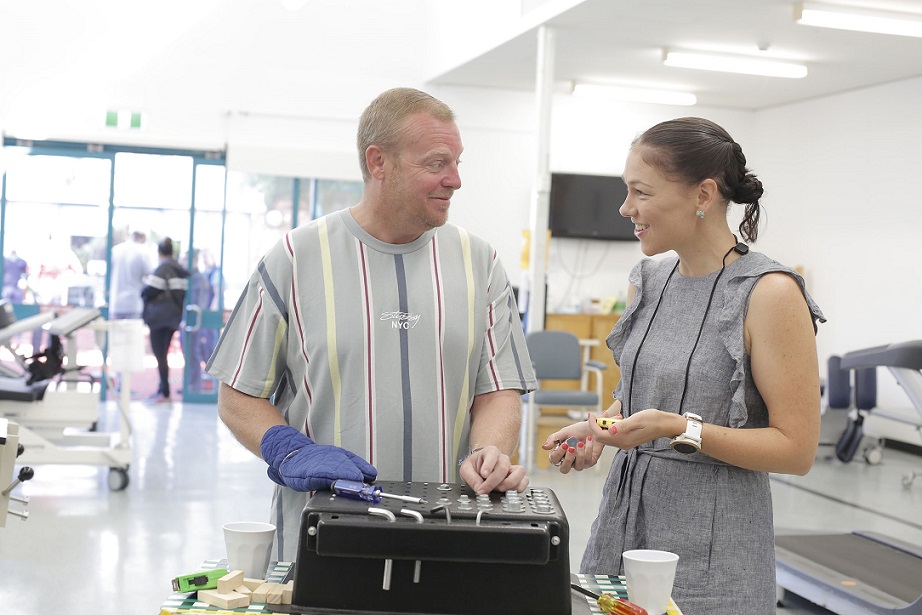“If you look at my medical records, I shouldn’t be where I am today,” says Scott Wade.
The Ingleburn resident was involved in a motorbike accident in 2017 that left him in hospital for months.
He was not expected to recover after breaking his neck in six places, remaining in a coma for more than a month, but he did.
The refrigeration and air conditioning mechanic began his recovery and needed his hands to continue his trade.
He credits his success to Constraint Induced Movement Therapy (CIMT), which would normally cost up to $10,000 at private facilities.
The two week high intensity rehabilitation program designed for stroke survivors and people with brain injury is making inroads into patients’ recovery across the South Western Sydney Local Health District (SWSLHD).

“I put my effort into CIMT. Without a doubt it has paid off,” he said.
For the past 18 months, Liverpool Hospital Brain Injury Rehabilitation Unit program coordinator and educator Lauren Christie, an occupational therapist, has introduced the often ignored treatment through the ACTiveARM project, funded by the NSW Health Translational Research Grant Scheme.
CIMT is a National Stroke Guidelines recommended intervention as a preferred treatment when upper limb movement has been impacted, but it is not often offered.
Data prior to Ms Christie’s study showed that of the 35 per cent of stroke survivors and people with brain injury across the SWSLHD who would have been suitable for CIMT, less than 2 per cent were offered it.
“It is a complex intervention and can be resource intensive,’’ says Ms Christie.
“It also requires a collaborative approach between the physiotherapist, occupational therapist and allied health assistants”.
Ms Christie introduced an implementation package to nine therapy teams across the SWSLHD to support therapists to change their practice with many continuing to offer the high intensive task-oriented program.
It requires stroke survivors to wear a mitt on their stronger hand to encourage the use of their weaker arm. Survivors usually complete three hours a day with their therapist for two weeks.
“It is very different to standard therapy where a survivor might spend an hour a week for months or even years attending outpatient therapy. It requires us to consider different models of service delivery,” Ms Christie said.



